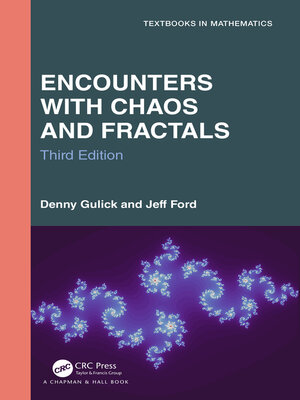
Sign up to save your library
With an OverDrive account, you can save your favorite libraries for at-a-glance information about availability. Find out more about OverDrive accounts.
Find this title in Libby, the library reading app by OverDrive.



Search for a digital library with this title
Title found at these libraries:
| Library Name | Distance |
|---|---|
| Loading... |
Encounters with Chaos and Fractals, Third Edition provides an accessible introduction to chaotic dynamics and fractal geometry. It incorporates important mathematical concepts and backs up the definitions and results with motivation, examples, and applications.
The third edition updates this classic book for a modern audience. New applications on contemporary topics, like data science and mathematical modeling, appear throughout. Coding activities are transitioned to open-source programming languages, including Python.
The text begins with examples of mathematical behavior exhibited by chaotic systems, first in one dimension and then in two and three dimensions. Focusing on fractal geometry, the authors introduce famous, infinitely complicated fractals. How to obtain computer renditions of them is explained. The book concludes with Julia sets and the Mandelbrot set.
The Third Edition includes:
This edition reveals how these ideas are continuing to be applied in the 21st century, while connecting to the long and winding history of dynamical systems. The primary focus is the beauty and diversity of these ideas. Offering more than enough material for a one-semester course, the authors show how these subjects continue to grow within mathematics and in many other disciplines.







